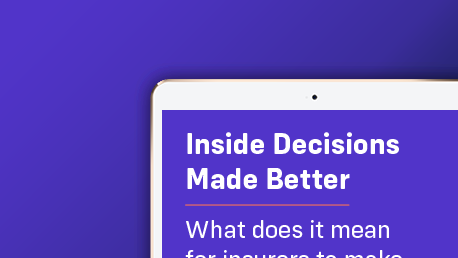The insurance industry can’t keep relying on the same processes, because the playing field is changing. The future involves digital touchpoints and expanded ecosystems that are interoperable with other applications. Upstart InsureTechs launch with these technologies built in, and their processes are specifically designed to take advantage of them. Meanwhile, incumbent property and casualty insurers still rely on processes that predate the digital era.
There’s decreasing space for manual processes in a digital world, which is especially true in the insurance industry. Creating digital touchpoints and wider ecosystems opens the door to increased customer interactions, but traditional manual processes struggle to keep up. Insurers must rely on automation – no, they must go beyond automation to meet the challenges that they’re facing.
Why do insurers need to go beyond automation?
Simply put, insurers have already been trying traditional automation methods, but these aren’t getting them where they need to go.
Claims operations are a great example. Insurers are reaching more customers through their digital touchpoints, which means they need to process more claims as a result. And many claims are simple enough that they could, in theory, be handled entirely through automation. Conventional wisdom holds that up to 50% of claims could be handled through low-touch or no-touch processes. Meanwhile, adding automation can potentially reduce the cost of claims handling by up to 30%.
Unfortunately, it is believed that less than 10% of claims are being processed in this manner.
The reality is that OCR and robotic process automation (RPA) – the automation tools that many insurers currently rely on – can’t handle the majority of claims without human intervention. These tools don’t respond well to variations in process, and they work best when everything is consistent. The real world is anything but consistent, however. These tools often fail to recognize a form that’s supposed to be typewritten if it is handwritten, or a misspelled word in an input field.
When OCR and RPA encounter scenarios they can’t handle, they escalate to human claims handlers. This slows down claims processing and results in less consistent, less accurate decisions – creating frustration and customer churn. In other words, even though insurers have invested millions in automation technologies, OCR and RPA still don’t deliver much in the way of expense reduction.
What lies beyond automation? Decisions
Imagine that an OCR tool encounters a handwritten form that’s supposed to be typewritten – but still correctly interprets what it says. Imagine that an RPA tool encounters a form with an input in an unexpected location – but still continues to automate the process. What does it take for these tools to operate without calling for human intervention?
In this case, the difference lies in the ability to make decisions.
AI-based decisioning helps insurers’ existing technology investments process claims without calling for human assistance at the first hurdle. This ability scales quickly and impactfully – reducing workloads for claims adjusters, creating faster processing speeds, and producing better outcomes that produce differentiation in the marketplace. Decisions are the missing ingredient for most carriers as they seek to alter the fundamentals of the business.
Where do these decisions affect insurers?
- Claims Intake - Decisioning tools can assess a claim and use internal and external data to understand whether it should be processed automatically or immediately handed to a human adjuster.
- FNOL - At the beginning of the claims lifecycle, AI tools can ingest a policyholder’s claim from multiple channels (such as online, over the phone, via branch offices, etc.) and recommend the next best action.
Liability Determination - AI tools can use the characteristics of the claim to evaluate liability percentage and determine next steps. - Triage & Assignment - Analyze and assign claims to optimal resources based on characteristics.
- Out of Network Provider (e.g. Glass, Tow, Rental) - Deliver comprehensive identification, evaluation and decision making related to ancillary claim exposures.
- Written Estimate Conversion - Provide analysis and evaluation of details in estimates (such as repair estimates, statements of work, and more).
- PIP / MedPay / UM / UIM - Support for the intake, evaluation and processing of data related out-of-network claim activities.
This approach allows insurers to begin to tackle claims complexity by applying resources to the claims specifics that materially improve claims outcomes. Insurers can move beyond simple rules based automations and focus handlers on the claims activities that attack the true drivers of loss costs.
Interested in learning more about Insurance Decisioning and the positive impact it can have on your organization. Download the Aite-Novarica report, “Intelligent Decisioning for P/C Insurance: How AI Is Automating Insurance Business Processes.” today!


